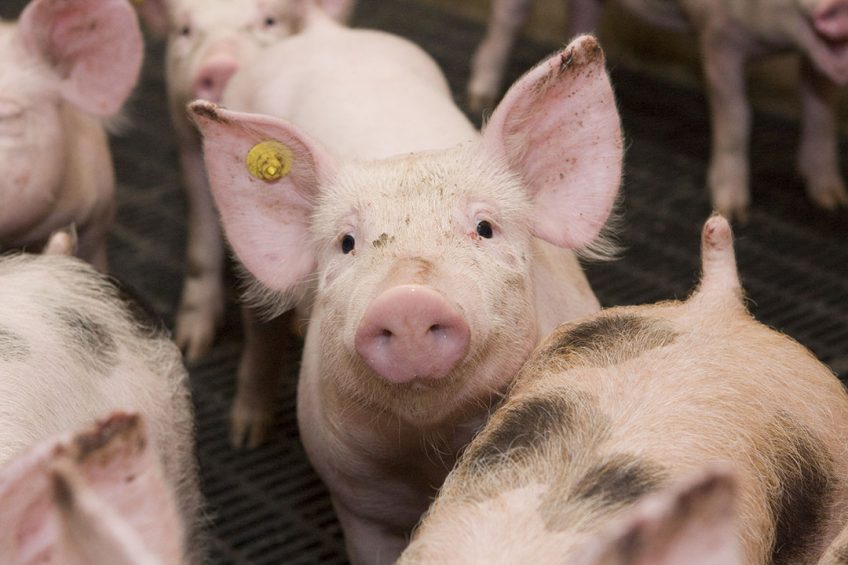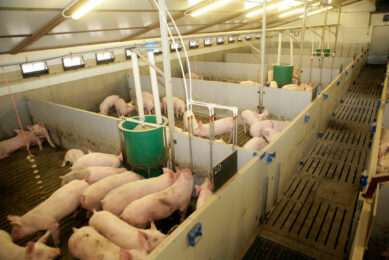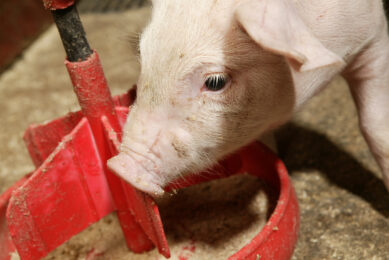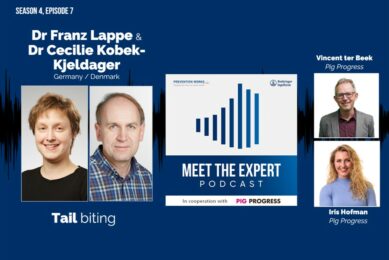Detection of ear biting in pigs using PLF

There is definitely potential for the development of a Precision Livestock Farming (PLF) tool for the early detection of ear biting in pigs.
That became clear after ground breaking work from a team of Irish and Belgian researchers, whose paper was recently published in the peer-reviewed journal Applied Animal Behaviour Science. The scientists were connected to the Irish research institute Teagasc and to KU Leuven in Belgium.
Pigs having difficulty with the farm environment
In their abstract, the researchers wrote that behaviours such as tail and ear biting can occur in intensive farms as the animals have difficulty coping with the environment and their inability to perform natural behaviours. However, much less is known about the aetiology of ear biting behaviour compared to tail biting behaviour.
Application of new intervention strategies may be the key to deal with this welfare issue. The discipline of Precision Livestock Farming (PLF) allows farmers to improve their management practices with the use of advanced technologies, the researchers wrote. “Exploring the behaviour is the first step to identify reliable indicators for the development of such a tool.”
An ethogram of biting and bitten pigs
Therefore, the scientists aimed to develop an ethogram of biter and bitten pigs during an ear biting event. An ethogram is a catalogue or inventory of behaviours or actions exhibited by an animal used in ethology. On top of that, they aimed to find potential features for the development of a tool that can monitor ear biting events automatically and continuously. The observational study was carried out on a 300 sow farrow-to-finish commercial farm in Ireland (Co. Cork) during the 1st and 2nd weaner stages.
The team video recorded in total 3 pens per stage, holding about 35 pigs each, 6 pens in total. They selected 2.2 hours of videos per pen for video analysis. In addition, they developed 2 ethograms, one for the biter and one for the bitten pig, to describe their behavioural repertoire.
Pig biter behaviour identified
For the video data, duration and frequency of the observed behavioural interactions were quantified. The research team identified 6 behaviours for the biter pig and a total of 710 interactions were observed:
• Chewing (215 cases);
• Quick bite (138 cases);
• Pulling ear (97 cases);
• Shaking head (11 cases);
• Gentle manipulation (129 cases); and
• Attempt to ear biting (93 cases).
• When the behaviour observed was not certain, it was classified as doubt (27 cases).

How to detect tail biting at an early stage? Pig welfare expert Vivi Aarestrup Moustsen shares some ideas
Bitten pig behaviour identified
In total 7 behaviours were identified for the bitten pig in response to the biters’ behaviour and were divided in 4 non-vocal behaviours described as:
• Biting (40 cases);
• Head knocking (209 cases);
• Shaking/moving head (225 cases); or
• Moving away (156 cases).
In addition, the researchers identified 3 vocal behaviours as
• Scream (74 cases);
• Grunt (166 cases); and
• Squeal (125 cases).
The team classified vocal behaviours using a verified set of features yielding a precision of 83.2%. The scientists found a significant difference in duration between all the behaviours, except between gentle manipulation and chewing where they found no difference in duration.
Heterogeneity of ear biting behaviours
The results illustrate the heterogeneity of ear biting behaviours, which may be used to better understand this poorly studied damaging behaviour. They also indicate potential for the development of a PLF tool to automatically, continuously monitor such behaviour on farm by combining the behaviour of the biter pig and the bitten pigs’ responses.
The scientific article was authored by Alessia Diana and Laura Ann Boyle, Teagasc, Ireland; Lenn Carpentier, Daniel Berckmans, Deborah Piette and Tomas Norton, KU Leuven, Belgium. Ms Diana is also connected to University College Dublin, Ireland.











